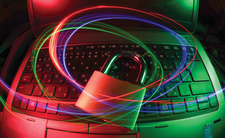Security audits with Lynis
Professional Hardening

© Photo by FLY:D on Unsplash
The complexity of modern distributions offers many potential attack vectors for malware. Lynis lets you find these vulnerabilities before an attacker does.
Virtually nobody uses a computer without Internet access. Unfortunately, the network of networks is teeming with malicious programs that exploit vulnerabilities in operating systems, firmware, and application programs looking to inject malware or steal personal data.
Sys admins protect their systems against these attacks as part of their daily grind. Home users also need to protect their systems by keeping their computers up to date and running an occasional security scan to detect any vulnerabilities. Lynis [1], a free software tool from CISOfy, covers a wide range of problem scenarios and lets you perform regular system checks in no time at all.
First Launch
Lynis, a command-line program, comes with a collection of scripts for Unix-style systems. These scripts check various vulnerable system components for insecure settings and display color-coded results.
[...]